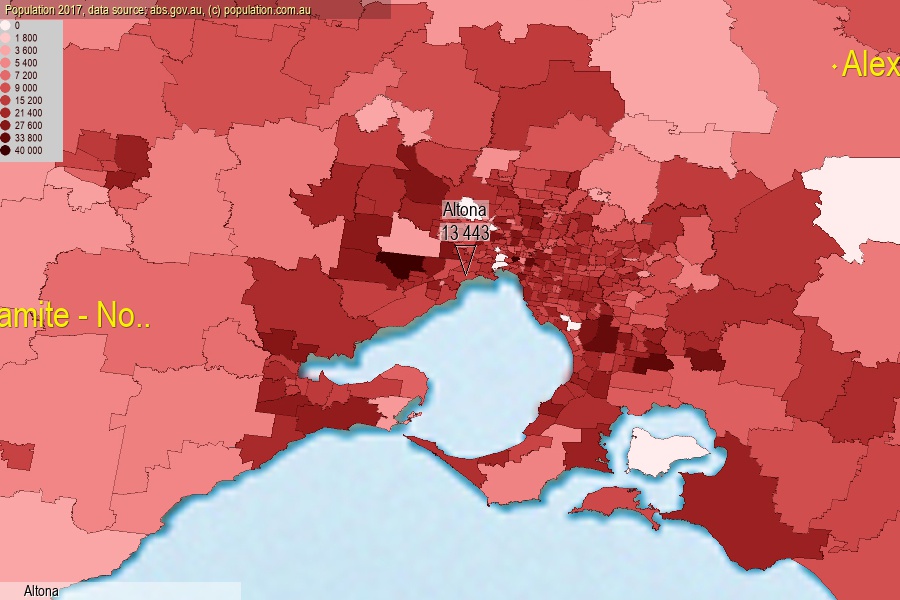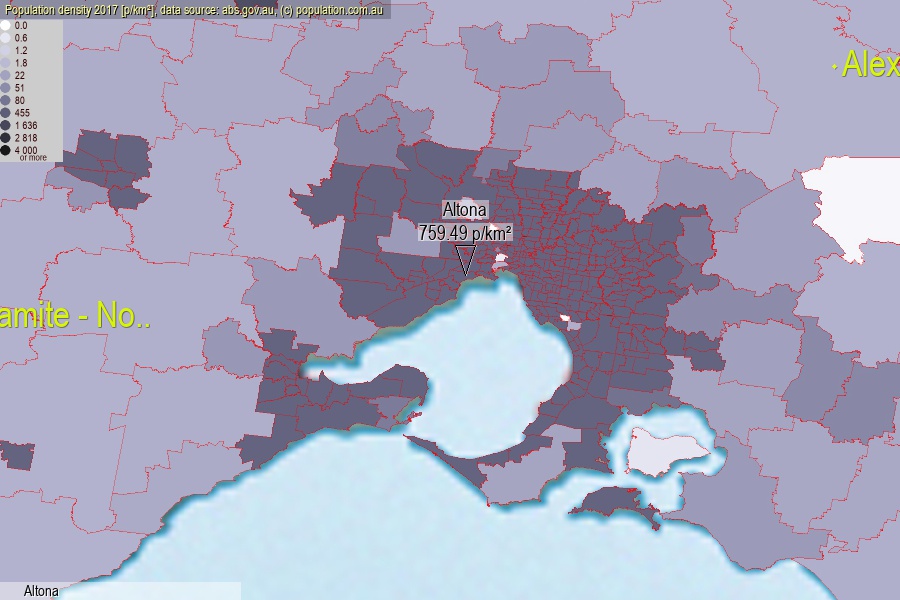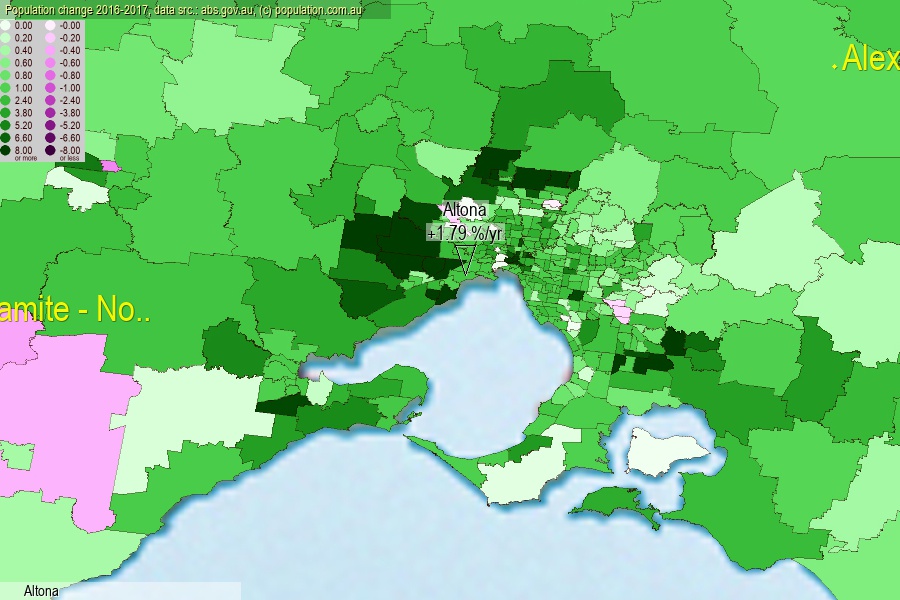 population.com.au
population.com.auLast official estimated population of Altona (as Statistical Area Level 2) was 13 443 people (on 2017-06-30)[2]. This was 0.05% of total Australian population and 0.209% of VIC population. Area of Altona is 17.70 km², in this year population density was 759.49 p/km² . If population growth rate would be same as in period 2016-2017 (+1.79%/yr), Altona population in 2025 would be 15 499. [0]



Click to enlarge. Altona is located in the center of the images.
Population [people], population density [p./km²] and population change [%/year] [2]
View borders » (new window) [4]
[1991-1992] -0.24 %/Yr.
[1992-1993] -1.07 %/Yr.
[1993-1994] -1.08 %/Yr.
[1994-1995] -1.17 %/Yr.
[1995-1996] -0.30 %/Yr.
[1996-1997] +0.13 %/Yr.
[1997-1998] +0.55 %/Yr.
[1998-1999] +0.25 %/Yr.
[1999-2000] +0.33 %/Yr.
[2000-2001] -0.14 %/Yr.
[2001-2002] -0.83 %/Yr.
[2002-2003] -0.62 %/Yr.
[2003-2004] -1.05 %/Yr.
[2004-2005] -0.46 %/Yr.
[2005-2006] -0.06 %/Yr.
[2006-2007] +0.49 %/Yr.
[2007-2008] +1.06 %/Yr.
[2008-2009] +0.92 %/Yr.
[2009-2010] +0.50 %/Yr.
[2010-2011] +0.38 %/Yr.
[2011-2012] +0.82 %/Yr.
[2012-2013] +1.48 %/Yr.
[2013-2014] +1.70 %/Yr.
[2014-2015] +1.74 %/Yr.
[2015-2016] +1.75 %/Yr.
[2016-2017] +1.79 %/Yr.
[0] Calculated with linear interpolation from officially estimated population
[1] Read more about SA2 and Australian Statistical Geography Standard (ASGS) on abs.gov.au
[2] Population data from Australian Bureau of Statistics (Population and density: 2017; change: 2016-2017)
[3] Digital Boundaries: Australian Statistical Geography Standard (ASGS) 2016.
[4] Border coordinates are simplifyed using Ramer-Douglas-Peucker algorithm.